Carnival Cruise Line has been reaching out to its guests to better understand their experiences with the Center Stage performance space on its Excel Class ships. The Excel Class includes the Mardi Gras, Carnival Celebration, and the upcoming Carnival Jubilee. These vessels showcase a new type of atrium concept called the Center Stage, a three-deck atrium performance space that is both a spectacle and a logistical challenge. Although Center Stage was conceived to offer a dynamic live entertainment hub with acrobatic performances and live bands, many guests have expressed their frustrations with the design, creating a conversation that the cruise line appears keen to address.

Understanding the Center Stage Layout
The Center Stage atrium is designed with three levels and a large central stage, catering to a range of entertainment preferences. On the main level, cocktail-style seating is meant to offer guests a more relaxed and intimate experience, while the upper two levels are set up with stadium style seating that provide a less-than-bird’s eye view of the performances. This architectural approach is intended to blend the boundaries between traditional atrium space and performance theater.
However, the actual experience is often marred by significant design flaws that impact the audience’s ability to comfortably watch and enjoy the shows. The main floor seating is not tiered, which means that guests who aren’t seated directly in front of the stage struggle with poor visibility. Those who end up on the upper two levels find their views hindered by poles and angled seating that doesn’t provide a direct view of the stage. These challenges are exacerbated by crowds that gather along the railings and bridges, creating congestion and blocking sightlines.
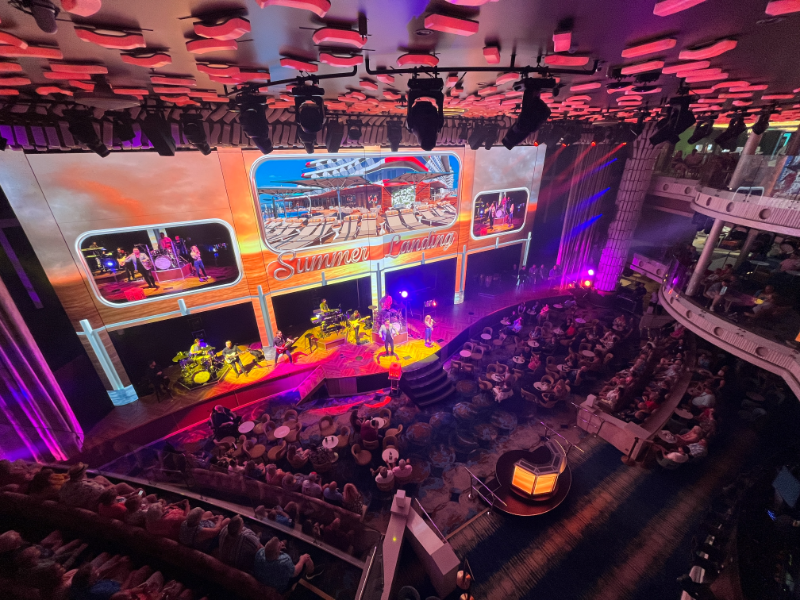
The Challenges of Finding a Seat
For many guests, securing a seat at Center Stage requires arriving exceptionally early, and even then, it can be a struggle. The absence of tiered seating on the main level means that only those fortunate enough to sit at the very front have a good view, while others have to contend with viewing the performance through strategically placed TV monitors. The upper levels, ostensibly designed to offer more seating, pose their own challenges with obstructed views and cramped walkways.
Adding to the confusion, Carnival has had to install warning signs along the glass railings, urging guests not to stand or lean against them for safety reasons. Similar warnings were placed to prevent guests from moving chairs onto the glass bridge walkways, which had become a popular tactic for those desperate for a glimpse of the stage.
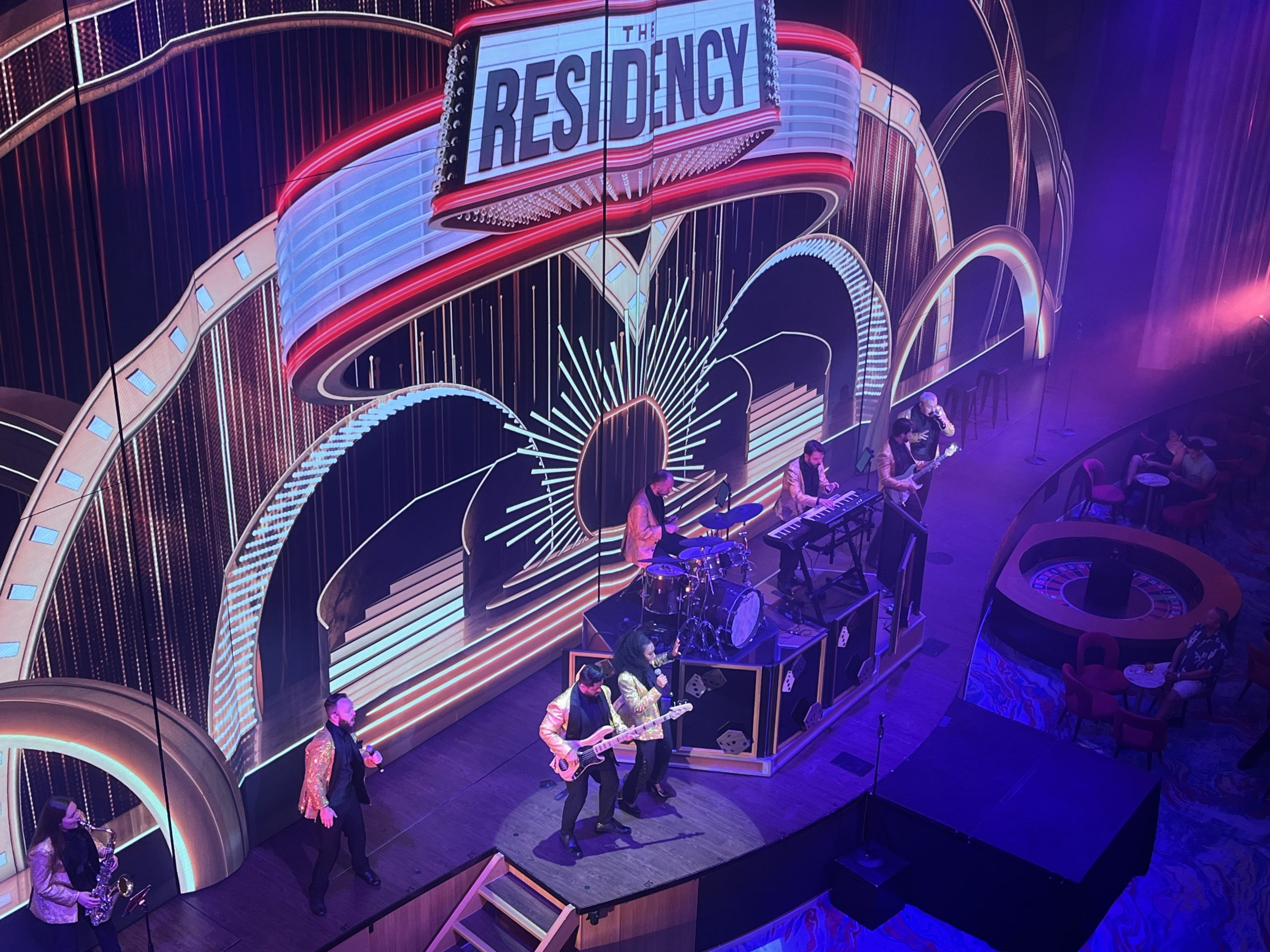
Survey Insights and Potential Improvements
Carnival’s survey to guests reveals a keen interest in understanding and rectifying these design issues. Some of the survey questions asked include:
- “Did you have any challenges finding a seat for the Center Stage shows?”
- “Where did you watch the Center Stage shows?”
- Possible responses range from the main floor to stadium seating to standing along a deck handrail.
- “Does the area offer an adequate amount of seating and viewing options?”
- “Are there enough seats to comfortably enjoy a show?”
These questions, and others like them, suggest that guests have indeed been vocal about their difficulties with the current setup. The inclusion of options like “stood along a deck handrail” as a response underscores the extent to which the design is misaligned with guests’ expectations and needs. The lack of comfortable seating options has resulted in a free-for-all approach, where people stand or gather wherever they can find space.

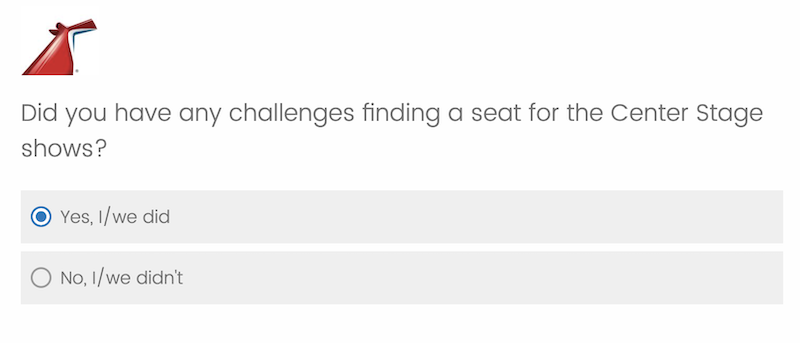
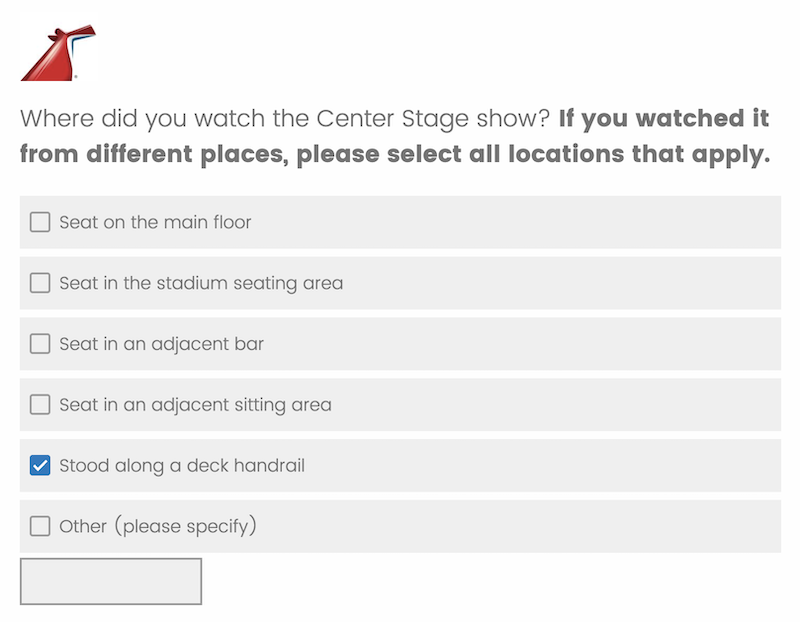
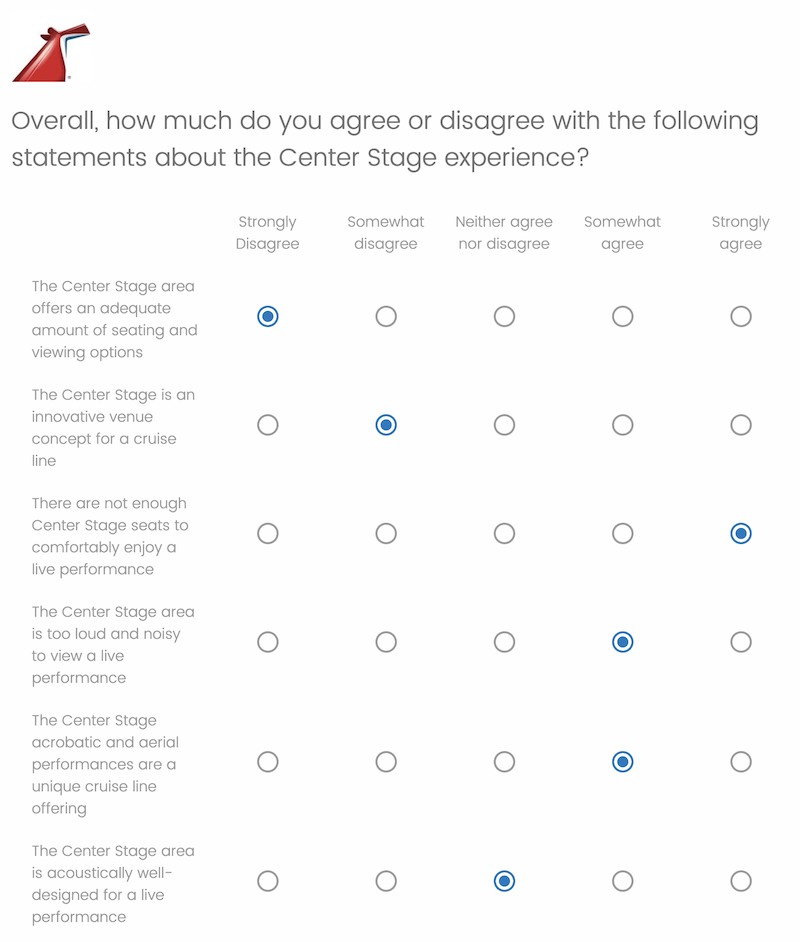

Looking Ahead: Future Revamps
Carnival Cruise Line’s intention behind this survey may signal an impending redesign of the Center Stage concept, either on existing ships or in their newly ordered Excel Class vessels. However, a redesign on the current ships could prove difficult due to structural limitations, while future ships offer a blank canvas to experiment with better designs. It remains to be seen how Carnival will reconcile its vision of a flexible atrium-performance space with the practicalities of crowd management and guest satisfaction.
In the meantime, Carnival could consider immediate improvements like better communication around seating arrangements and implementing better crowd control by introducing advanced ticketing or reservations for popular shows to avoid the mad rush. Reconfiguring or expanding viewing zones on existing vessels might require significant changes, but smaller modifications could go a long way in enhancing guest experiences.
Ultimately, the survey serves as an important step in acknowledging and addressing the concerns that many guests have voiced. Carnival Cruise Line has an opportunity to reshape the Center Stage experience into one that reflects the spirit of their Excel Class ships while delivering on the promise of a seamless, enjoyable performance space for all. Whether it means modifying the current architecture or redesigning future ships, hopefully guests can look forward to an improved Center Stage area in the near future.
